
You may have heard of Fabergé eggs in passing, but these ornaments are not a variety you can get in a store – they are some of the most expensive pieces of jewels you can come across. The majority of these eggs are the handiwork of Peter Carl Fabergé, who made them especially for the Russian Tzars between 1885 and 1917. Altogether some about 50 eggs were created for the Russian royal family, each its own delicate work of precious metals, gems, and enamel coating. This series of photos will show you some of the most famous and artistic Fabergé eggs, as we continue to tell you the story of these famous eggs.
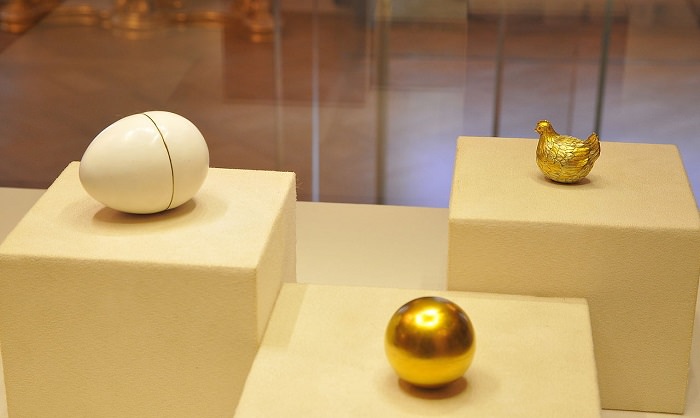
The First Chicken
“The Chicken” was the first egg Fabergé created, as a gift given by Tsar Alexander III as a gift to his wife, Empress Maria Feodorovna, for Easter in 1885. The egg is made of gold and coated in enamel, which resembles eggshell. Inside the egg hides another surprise – a gold chicken with ruby set eyes. The chicken also opens to reveal a miniature copy of the imperial crown, made of gold and diamonds, as well as a ruby pendant. While it may seem like a simple piece of jewelry, it still serves as evidence of Fabergé’s creativity and attention to details.
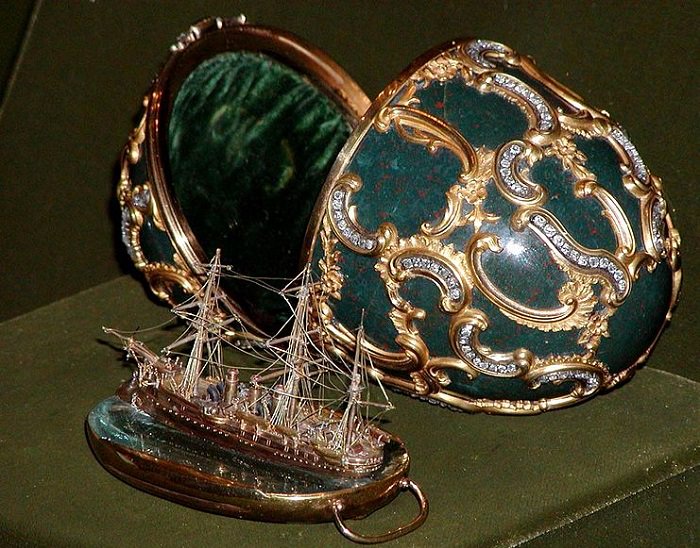
Memory of Azov
“Memory of Azov” was presented as a gift to Alexander the 3rd, the Tzar of Russia, in 1891 and is evidence of Fabergé’s evolution as a jeweler. This egg commemorates the voyage of Tzarevich Nicholas (later Tzar Nicholas II) and his brother Grand Duke George Alexandrovich on the armored cruiser "Memory of Azov". The ship was named after a naval victory during the Russo-Turkish War (1877-1878).
The egg is made of a solid piece of heliotrope jasper (also known as a “bloodstone”) and is decorated with gold filigree, embedded with diamonds. As in most Fabergé eggs, “Memory of Azov” hides a little surprise inside – a miniature model of an old battleship, the Pamiat Azova. To safeguard the model ship, the egg interiors were lined with green velvet.
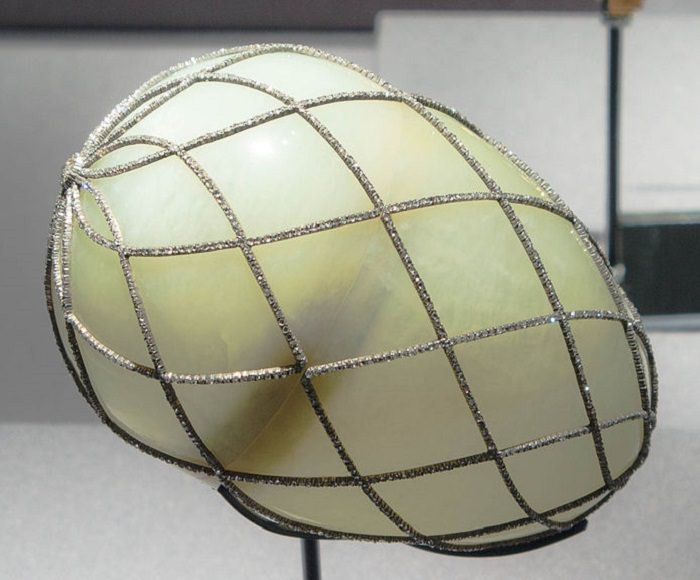
Diamond Trellis
![]()
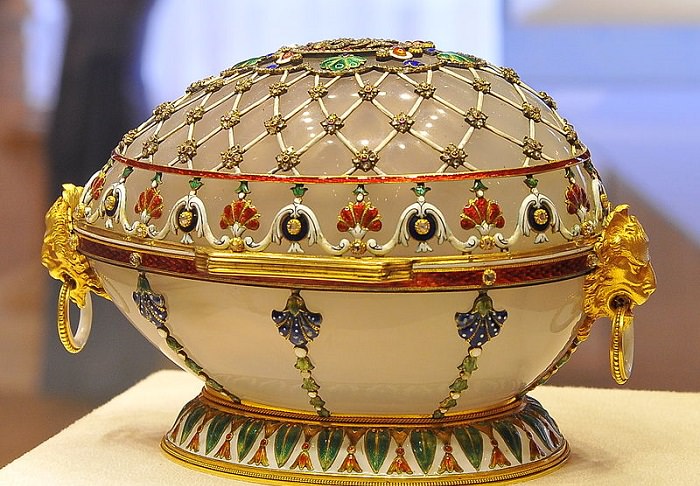
Renaissance
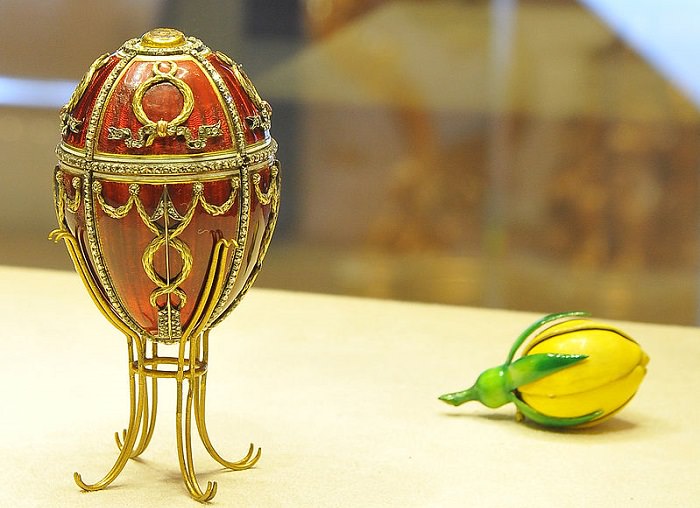
Rosebud
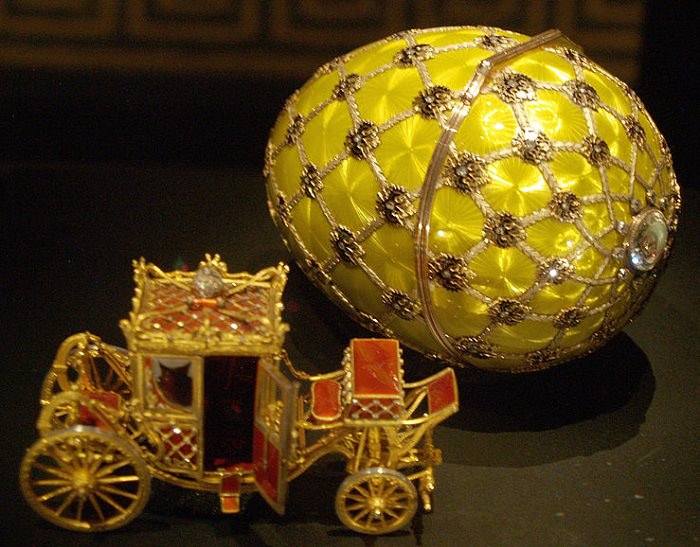
Imperial Coronation Egg
The Coronation Egg was personally handed to Tzaritsa, Empress Alexandra Feodorovna. It is part of a collection of jewels made under the supervision of Peter Fabergé. Empress Alexandra was married to Nicholas II, the last Tzar of the Russian Empire, making this egg, which was given to her on her coronation day, an invaluable piece of history. Inside the egg hides a 3.5” (less than 10cm) model of the carriage that the empress rode in on her coronation day. Unfortunately, the original 'surprise' has been lost, but the egg itself is considered one of Fabergé's masterpieces due to its intricate design and historical significance.
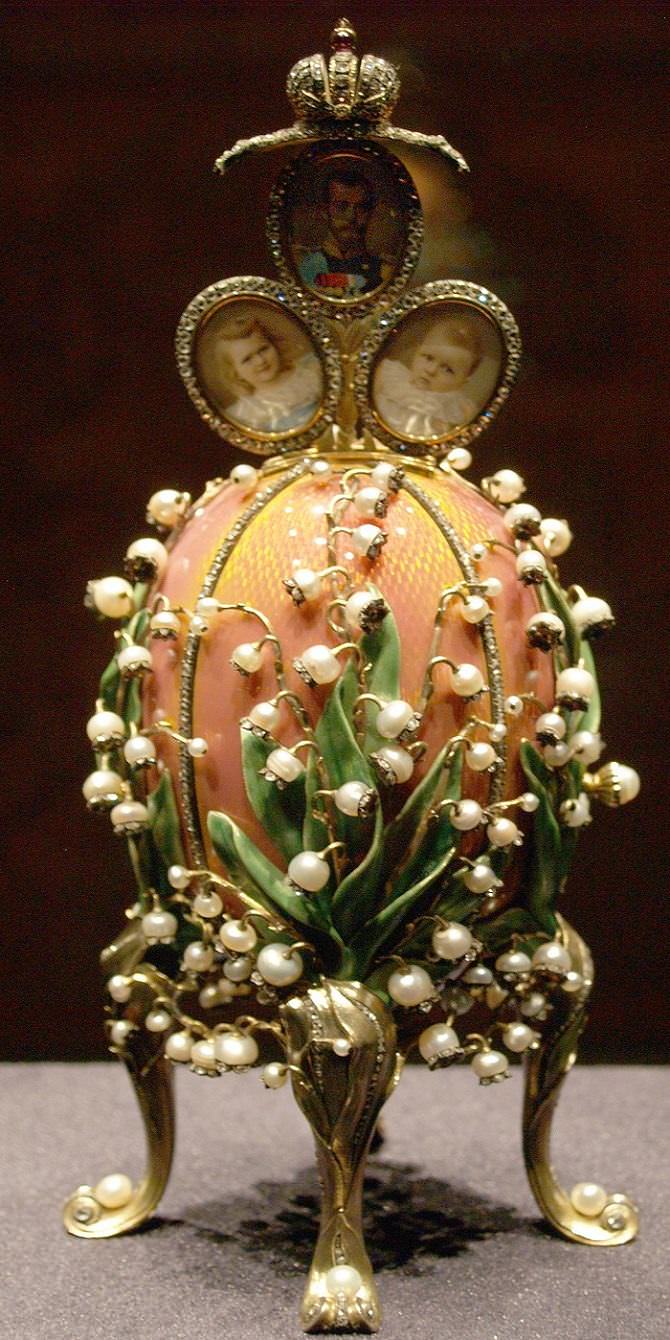
Lilies-of-the-Valley
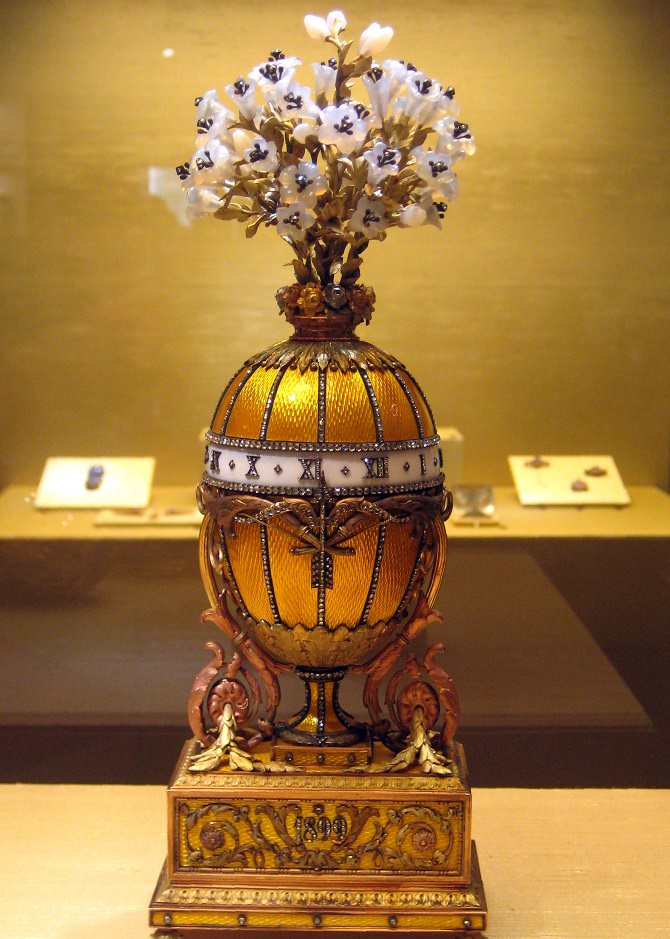
Bouquet of Lilies Clock
A few years after presenting the Coronation Egg to the last rulers of the empire, Fabergé presented the Bouquet of Lilies Clock to the Tzar’s wife as an Easter gift from the Tzar. The egg was presented in 1899 and since that day has never left Russian soil. It is one of the few eggs that the Russians managed to preserve from being sold or stolen. The egg itself is a functioning clock, made of gold and adorned with diamonds, sporting Roman numerals. The top of the egg is a bouquet of lilies, meant to represent innocence and love.
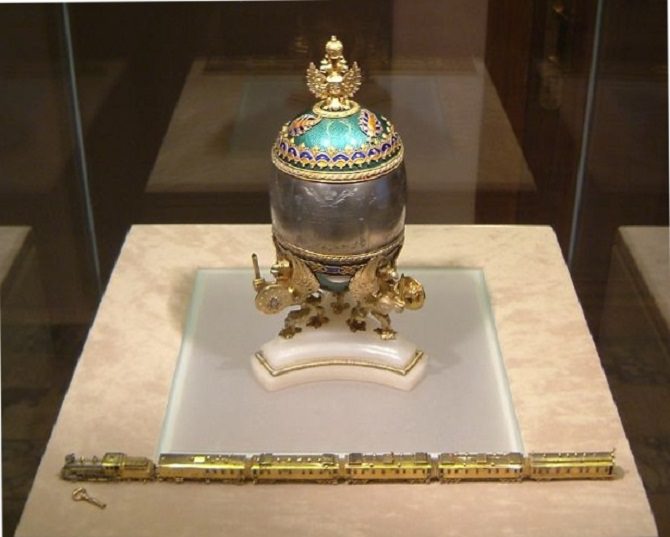
Trans-Siberian Railway
[related_articles
] 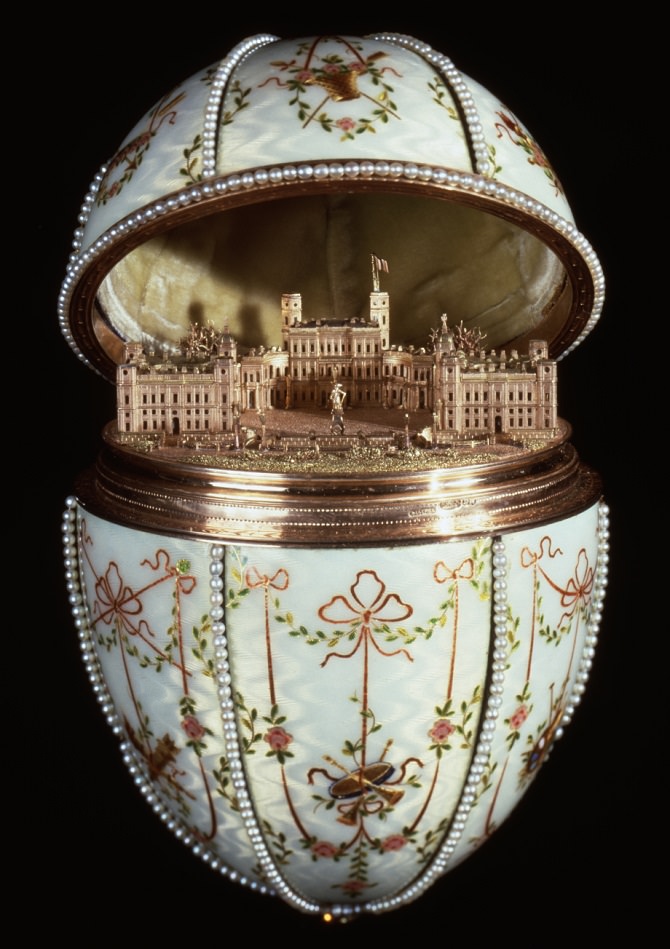
Gatchina Palace

Peter the Great
Dedicated to one of Modern Russia’s spiritual ancestors, this egg celebrates Peter’s achievements in expanding the empire’s dominion. In 1703, Peter the Great established the city of St. Petersburg, and the egg was made to celebrate the bicentennial anniversary of the city, presented as a gift to the Emperor and his wife. The egg is made of gold, painted in red, green, and yellow, adorned with rubies and quartz. A special feature are portraits painted on ivory that are held inside the egg. The portraits depict the city in its early days, as it looked in 1903, as well as a portrait of St. Peter himself as well as Nicholas II.
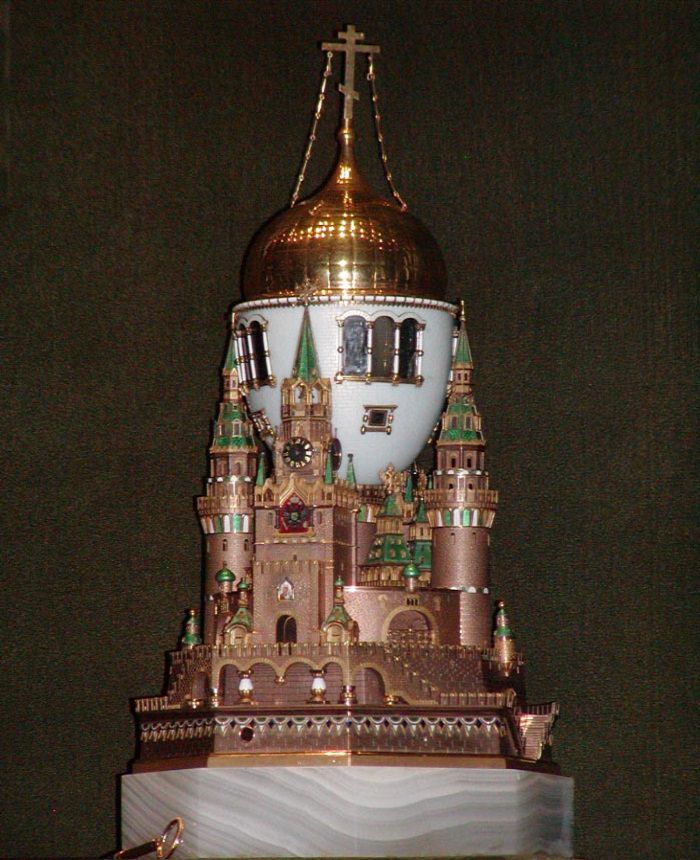
Moscow Kremlin
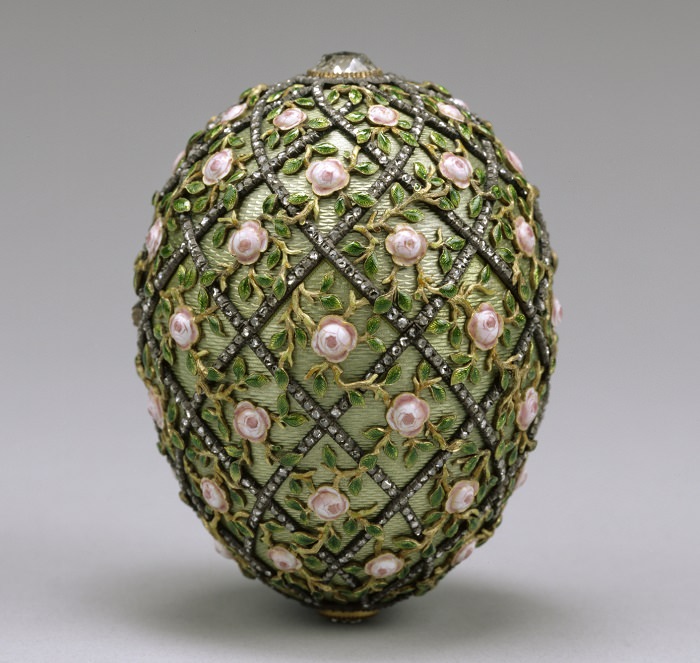
Rose Trellis
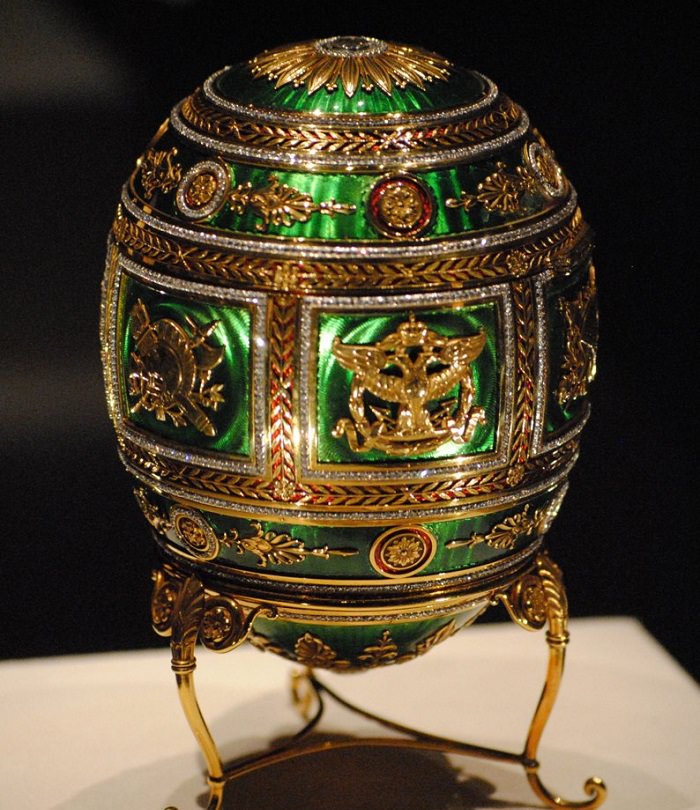
Napoleonic
The Napoleonic Egg was one of the last to be produced under Fabergé’s supervision, in 1912, five years before retiring. This egg was a gift to Nicholas II’s mother, Maria Feodorovna, Princess of Denmark and Empress of Russia. The egg’s design is based on the centennial celebrations of the battle of Borodino – a major battle of the Napoleon-led French invasion of Russia in 1812. The shell is decorated with diamonds and emeralds, along with the royal crests of Denmark, and imagery of Feodorovna herself. Inside the egg, you can find a six-panel miniature screen painted in watercolor, showing the six regiments, of which Maria Feodorovna was an honorary colonel.
When one sees these spectacular eggs, having learned some of the fascinating history behind them, it’s hard not to admire the masterful work. It's no wonder these ornaments are considered to be some of the world’s most exquisite jewels. Most of the Fabergé eggs can be seen in museums in Russia and around the world, such as the Kremlin Armory in Moscow, the Fabergé Museum in Saint Petersburg, Russia, the Virginia Museum of Fine Arts in the USA, and the Royal Collection in the UK. Some of them still remain in private collections. The eggs have led to a whole new art field, made in honor of Peter Fabergé. If you’re ever lucky enough to view one in person, remember that you’re not just looking at an expensive jewel, but also an invaluable piece of history.
Image sources: wikipedia.org